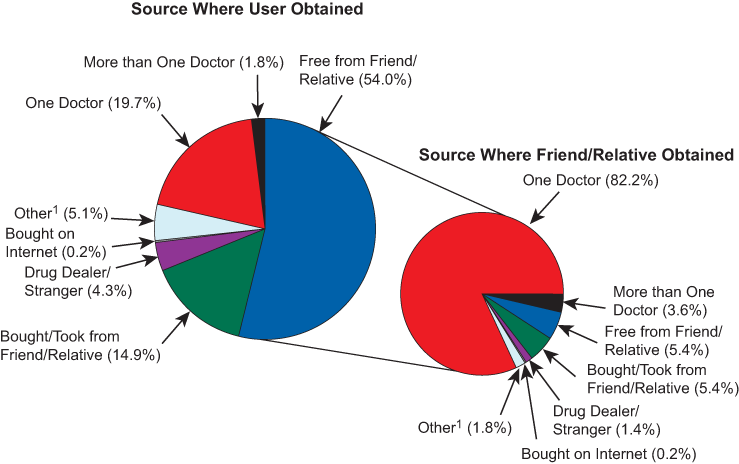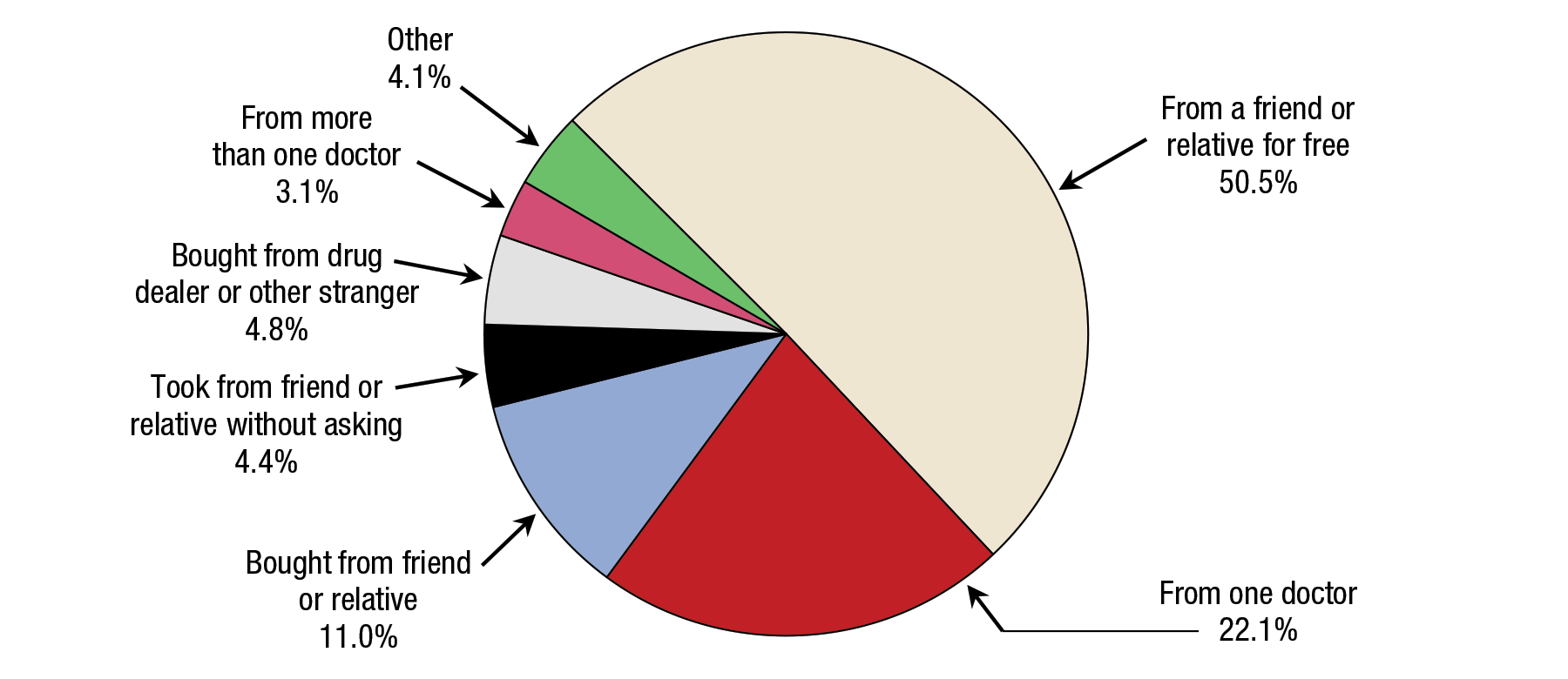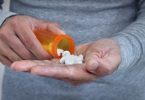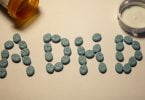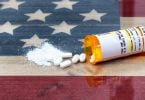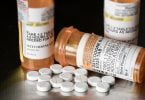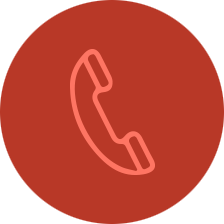The National Institute on Drug Abuse points out that over one-third of adults in America used prescription pain relievers in 2015, with two million of them suffering an addiction or disorder. This cost our country $78.5 billion for healthcare, police services and the loss of productivity. A resolution for this crisis requires knowledge of the source of pain relievers that are being misused.
Opioid pain relievers induce a short-lasting feeling of euphoria while relieving pain; this is dangerous as it has a powerful ability to create an addiction. For one addicted to an Opioid pain reliever, the substance is easy to obtain despite its status on the Drug Enforcement Agency’s schedule of drugs.
Sources of Pain Relievers in 2011-2012
Not only were Opioid pain medications easily obtainable, they were often low cost or free. When prescribed by a doctor, health insurance plans often cover the cost or close friends and family members furnish the pills with no expectation of payment.
Information obtained by the National Survey of Drug Use and Health in 2011 and 2012 was combined in the following graph to illustrate the most common sources of Opioid medications for misusers, or abusers, for this time.
Of those who were over the age of 11 in 2011 and 2012 and admitted to misusing Opioids in the previous year, 54 percent disclosed that the medication came from a friend or relative during their most recent pursuit of the substance. These friends and family members are often unwittingly helping to support their loved one’s Opioid addiction.
The majority of abusers (68.9%) obtained prescription pain relievers from friends and family members. While 54 percent received them for free from loved ones, close to 15 percent purchased or stole the pills from them.
Almost 22 percent had prescriptions for the medication from one or more doctors and almost five percent were able to buy them on the street or Internet. About five percent of abusers exercised other methods to obtain the pain relievers. This category includes counterfeit prescriptions, medication stolen from pharmacies and more.
The source of the medication for the friends and family members who provided it to an individual is one doctor for over 82 percent of those who participated in the survey. Almost 11 percent obtained it from one of their friends or family members, 3.6 percent saw more than one doctor for prescriptions, 1.4 percent got it on the street while almost 2 percent got it another way.
Sources of Pain Relievers in 2013-2014
In 2013 and 2014, about 10.7 million individuals over the age of 11 were misusing prescription pain pills which translates to just over four percent of the American population. There have been some small yet troubling changes in these sources since 2012.
Information obtained by the National Survey of Drug Use and Health was combined in the following graph to illustrate the most common sources of Opioid medications for abusers in 2013 and 2014.
The majority of abusers (66%) are still getting the pills from a friend or family member, which is two percent less than the previous two years. However, friends and family aren’t handing them over as easily as they once were. While over 50 percent still received the medicine from loved ones for free, about 15 percent purchased or stole the substance from someone they know, similar to 2011 and 2012.
In 2013 and 2014, the number of abusers who received prescriptions for the medication went up four percent to a total of approximately 25 percent. This is a concern as it indicates that doctors remain to be a significant source of pain relievers for misuse.
The remainder of the participants in the survey obtained prescription pain pills from a stranger or a drug dealer (4.8%) and other methods (4.1%).
Doctors: Abusers’ Main Source for Prescription Pain Pills
Stephen Patrick, a Vanderbilt University neonatologist acknowledged that the main force behind the growing rate of opioid pain relief misuse is excessive prescriptions by well-meaning doctors concerned about their patients’ pain and discomfort.
“It started in the ‘80s, thinking about how we take care of untreated pain. We had some science that was wrong about the risk of addiction potential when you treat [people with pain],” Patrick said. This scientific misunderstanding allowed doctors to become the most likely source to obtain pain relievers for those struggling with a substance use disorder.
Pain is not the only culprit. Often, doctors treat patients who are suffering from more than pain.
Some psychiatric conditions are known to create a physical sensation of pain. For examples, anxiety disorders can cause chest pains and stress disorders can cause headaches. Complicated disorders can cause more serious physical pain.
Often, an undiagnosed psychiatric disorder is the main cause of physical pain however; recent research has shown that Opioids are often ineffective, especially if the mental illness is not properly treated, which often leads to a number of visits in which the doctor unknowingly becomes a source of pain relievers for a patient who is misusing them.
Other Sources of Prescription Pain Pills
In 2008, musical entertainer Prince had surgery to relieve hip pain. It was unsuccessful so he became a regular user of prescription pain relievers, yet having no prescription for them from a doctor. He presumably obtained them on the Black Market as he died of a Fentanyl overdose and counterfeit Vicodin was hidden throughout his Paisley Park home.
Fentanyl is 500 times more potent than Vicodin so manufacturers use it to increase their profit line. Prince, believing he was taking Vicodin, accidentally ingested a fatal amount of Fentanyl. No one will be charged in the death of the musician as the investigation turned up no motive to hurt Prince and no leads to the person who provided him with the pills.
This is one of many cautionary tales about misusing prescription pain relievers from questionable sources. It’s easy to become addicted to prescription pain relievers as they are easily obtainable from varied sources, making them dangerous to someone with has a substance use disorder or addiction.
Contact us today if you or someone you care about is struggling with misusing prescription pain relievers. We’re happy to answer your questions and help you get started today.


